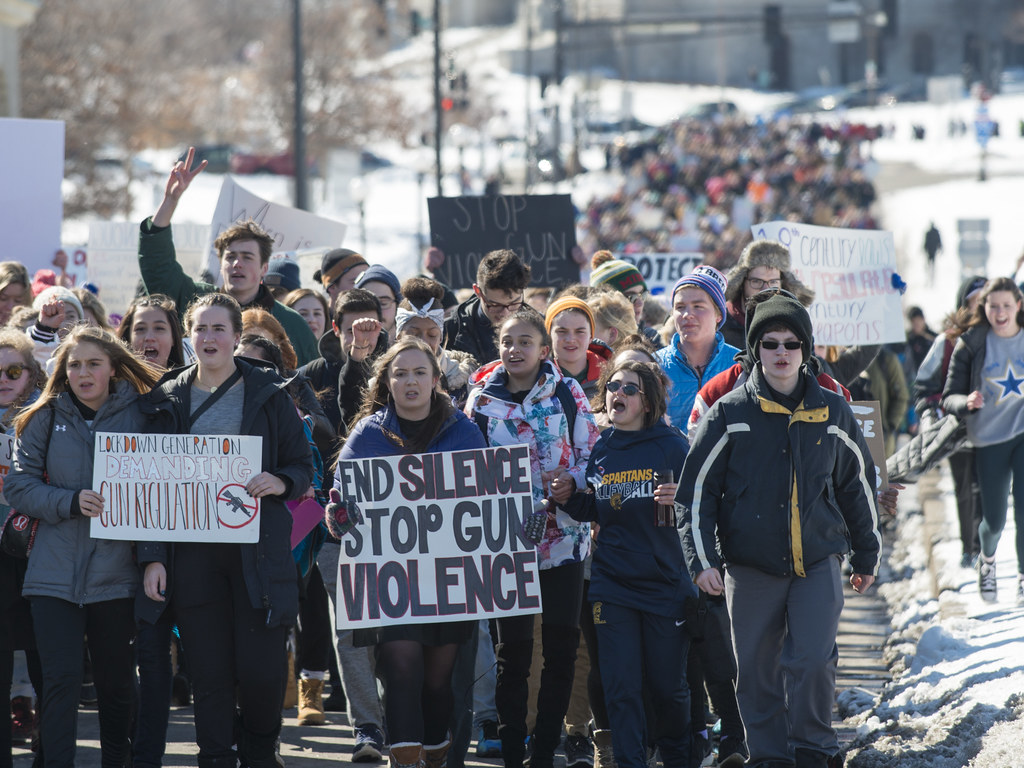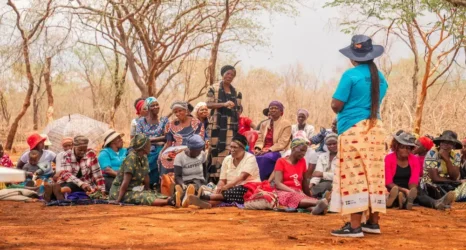
Nearly 2,000 women were murdered by men in 2018 and the most common weapon used was a gun, according to the most recent edition of the annual Violence Policy Center (VPC) study “When Men Murder Women: An Analysis of 2018 Homicide Data.”
The study covers homicides involving one female murder victim and one male offender, using data from the Federal Bureau of Investigation’s Supplementary Homicide Report. VPC uses 2018 statistics, the most recent data available, to calculate the rate of women murdered by men by dividing the total number of females murdered by males in single victim/single offender incidents by the total female population and multiplying the result by 100,000.
Although VPC won’t have access to 2020 data for two more years, VPC legislative director Kristen Rand expects to see an increase in domestic violence homicide for 2020.
“Everything we’re seeing, all the anecdotal information, shows an increase in domestic violence homicide,” she says. “We’re very worried about the increase in gun sales so, not just for female homicide but overall for 2020, we expect to see a price paid for new people going out to buy firearms.”
According to data from the FBI, nearly 26 million background checks were conducted from January to August of this year—compared with 28.6 million background checks for all of 2019.
VPC’s annual study of women murdered by men with guns has been released every year since 1996, typically the week before October—Domestic Violence Awareness Month. In the past 23 years, the lowest incident rate was 1.08 per 100,000 women murdered by men in single victim/single offender incidents in 2014. Since then, the rate has increased, with 2018’s rate of 1.28 up 19 percent since 2014.
The latest study finds that nine out of 10 victims (92 percent) knew their offenders. Of the victims who knew their offenders, 63 percent were wives or other intimate acquaintances of their killers. Eleven times as many females were murdered by a male they knew than were killed by male strangers.
This is significant, Rand says, because VPC initiated its annual study to debunk the myth that random strangers lurking in the shadows present the most danger to women.
“The biggest risk of danger is from people they know,” Rand says.
Black Women More Likely to Experience Lethal Domestic Violence
As in years past, Black women are more likely to experience lethal domestic violence than white women. In 2018, Black females were murdered by males at a rate of 2.85 per 100,000—nearly three times the rate of 1.03 per 100,000 for white women murdered by men.

It’s hard to pinpoint the reasons for Black women experience more domestic violence homicide without having more research, Rand says: “We would like to see more resources dedicated to looking at underlying reasons.”
Anecdotally, VPC hears from local advocates for women experiencing domestic violence that the issue isn’t taken seriously by state legislatures, particularly in some southern states, Rand says.
“It’s a multifaceted problem,” she says. “Anything that helps contribute to an understanding that women are equals and treating them equally under law would help with the problem.”
At the federal level, anyone with a misdemeanor or felony conviction related to domestic violence or anyone having an active protective order related to domestic violence is prohibited from having a firearm, however, there are so many layers of government it’s easy for things to slip through the cracks, Rand says. For instance, someone could be convicted of assault for beating his wife without the conviction being tagged as domestic violence. The conviction also would need to be filed with the right database for it to be flagged during a background check to buy a firearm.
“There’s a whole host of hurdles to make sure anyone who has that type of conviction is in the system and it’s fully enforced,” Rand says. “People think passing a law will change things but you don’t realize there are many layers.”
State by State
According to Gifford Law Center to Prevent Gun Violence, 14 states require law enforcement to remove at least some firearms at the scene of a domestic violence incident—California, Hawaii, Illinois, Montana, Nebraska, New Hampshire, New Jersey, Ohio, Oklahoma, Pennsylvania, Tennessee, Utah, Washington and West Virginia. Six other states—Alaska, Arizona, Connecticut, Indiana, Maryland and Vermont—authorize the removal of firearms but don’t require it.
Yet, Alaska and Tennessee show up on VPC’s list of the states with the 10 highest rates of females murdered by males in single victim/single offender incidents in 2018. The eight other states are Missouri, Oklahoma, New Mexico, Louisiana, Arkansas, Nevada, North Dakota and Montana.
“States will have restrictions in place but the judges might not know they’re supposed to receive an order to make sure the guns are removed,” Rand says.
Women facing domestic violence also need to be trained about their rights. Nearly one in two women experience some form of sexual violence other than rape in their lifetime, yet fewer than one in four sexual assaults are reported to police, according to the Rape, Abuse and Incest National Network (RAINN)—often because women fear retaliation or believe the police won’t do anything to help them.
Advocacy groups for women facing domestic violence should teach victims self-defense and how not to be afraid when they see a weapon, says Wendy Murphy, an adjunct professor of sexual violence law at New England Law Boston.
“Whenever a woman is at risk of being killed in a domestic violence incident, they should be trained in all forms of weaponry,” Murphy says. “Notice how I don’t say she should get a gun. If you trained women in weapon use, they wouldn’t be as intimidated when they see a gun or knife. They would know how to do something about it and feel capable of self-defense. The more you can do to equalize the power between abuser and victim, the better the chance the victim won’t be killed.”
Without Full Constitutional Equality, Women Will Suffer Higher Rates of Violence
The ultimate protection would be the ratification of the Equal Rights Amendment, says Murphy, who filed a lawsuit in the U.S. District Court in Boston earlier this year calling for the ERA to be certified now that Virginia became the 38th state to ratify the amendment in January. The lawsuit highlights the fact that women suffer disproportionately higher rates of violence because they do not enjoy full constitutional equality.
Until the ERA is ratified, it will take “everyone working together from the local, county and state level up the chain cooperating to understand the problem of domestic violence, providing resources and education, and working together to change things,” Rand says.





